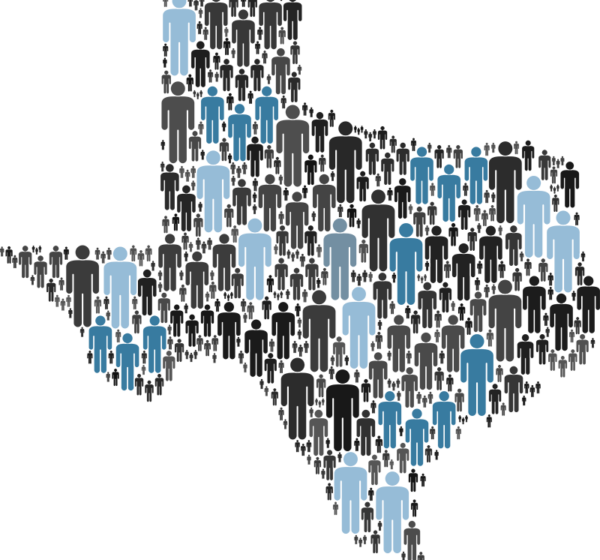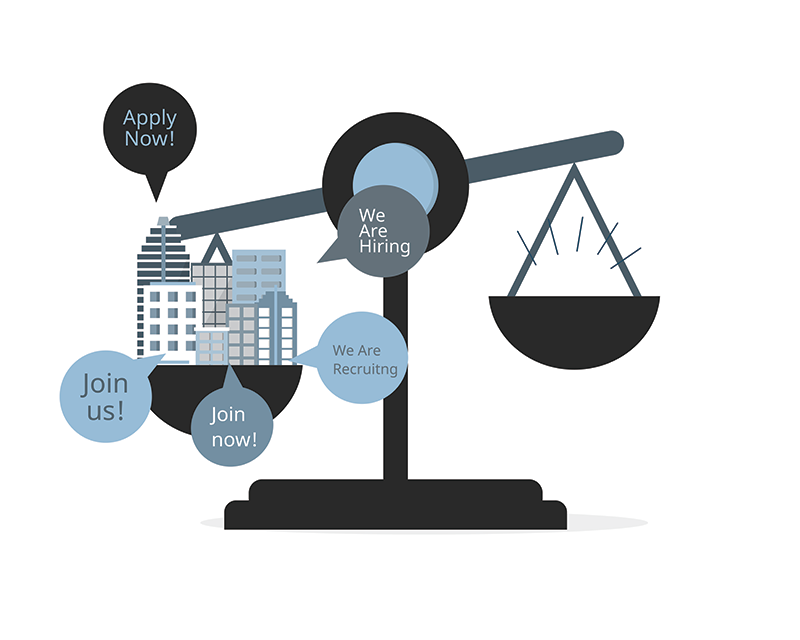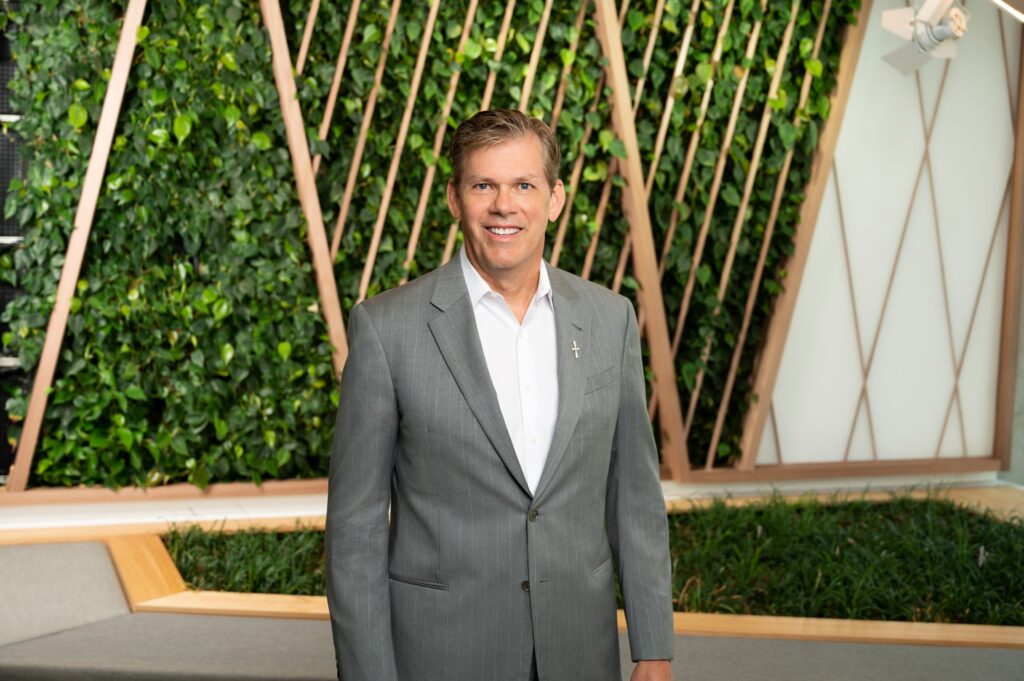Machinations

Labor shortages, demographic patterns, and the future of the job market create a long-term picture of the workforce.
The workforce is always evolving, with demographic patterns and economic conditions leading to shifts in the types of workers and jobs available. The pandemic sped up the pace of some long-term trends on both fronts, intensifying worker shortages and hiring challenges.
Job openings in many parts of the United States, including Texas, are exceeding unemployment. While potentially beneficial for those looking for work (assuming they have the requisite skills), the shortages present notable challenges. Businesses unable to fill positions are often forced to respond by reducing operating hours or even closing locations, and the economy is functioning at less-than-optimal efficiency.
For perspective, prior to COVID-19, the number of job openings across Texas had never topped 623,000 and was generally well below that level. In February 2020, just before the pandemic, there were 534,000 openings. With the ensuing disruptions, openings dropped as low as 302,000 (April 2020) before beginning to rise.
By the end of 2020, they were back in pre-pandemic ranges. As the Texas economy continued to gain momentum through 2021, the number of open positions started trending toward 900,000 or higher. In July (the latest data at press), they stood at 985,000. This record escalation comes despite rapid hiring in recent months. Texas regained all of the jobs lost during the shutdown in only 19 months (15 months or less in some urban centers), compared with 27 months for the nation as a whole. The pace of expansion and number of openings may moderate given challenges such as inflation, higher interest rates, and greater uncertainty on many fronts. In fact, it would be difficult to find enough bodies to fill positions at the recent rate over an extended period. Nonetheless shortages will persist.
What we have seen by and large is a “great reshuffling” as workers have changed jobs to seek better alternatives.
Many factors are contributing to the current labor shortages. Simple demographic reality is one major culprit. Texas is reflecting national trends, with the retirement of the baby boomers coinciding with decisions by younger people to start working later. The so-called Great Resignation, where millions of Americans purportedly left the workforce, is also contributing modestly, although far less than some headlines imply. In fact, the workforce participation rate in the working-age population is only slightly below pre-pandemic levels. What we have seen by and large is a “great reshuffling” as workers have changed jobs to seek better alternatives. Much of this current problem would exist even if COVID-19 had never happened, and it will be with us for the foreseeable future.
The bottom line is that we have seen these labor shortages coming for a long time, although the pandemic accelerated things moderately. The underlying demographic patterns are the driving force. Strong economic expansion in Texas is also raising labor demand.
Demographic Patterns
Born after World War II between about 1946 and 1964, the baby boom generation of an estimated 73 million is second in size only to the millennials, born from 1982 to 2000. The oldest boomers are now in their mid-70s, and by 2030, all boomers will be 65 or older.
Birth rates across the nation have also slowed, and the US population is hardly changing. In fact, the US population under age 18 was about one million lower in the 2020 Census than just 10 years prior.
Texas is better situated than most of the country given our younger population, opportunities relative to other states, and higher birth rates. Fortunately, Texas is also seeing more growth in younger age ranges than many parts of the country. The under 18 age group actually increased by more than 400,000 in Texas even as it shrank nationwide.
The Census Bureau’s population estimates by state for the period from July 2020 to July 2021 further illustrate this point. While the total US population scarcely changed, there were seismic regional shifts. The Northeast lost nearly 366,000 residents and the Midwest lost almost 94,000. The South increased by over 816,000, and the West gained 34,000.
The Texas population grew more than any other state, up over 310,000 for the year. Florida (211,000), Arizona (98,000), and North Carolina (94,000) also saw substantial rises, as did Georgia, South Carolina, Utah, Tennessee, and Idaho (all up at least 50,000). The states with the largest shrinkage between 2020 and 2021 include New York (down over 319,000), California (-262,000), and Illinois (-114.000). Populations declined in 18 states, including Massachusetts, Louisiana, and Pennsylvania.
One obvious factor is that Texas ranks only behind Utah among states with the youngest populations (tied with Alaska) with an average household size well above the national average. The result is a higher natural rate of increase from patterns in births over deaths.
In addition, people are moving to Texas and the other states gaining population in large numbers. Reasons for the movements are many and varied, but there are some common themes. Destination states generally have higher economic growth rates and, hence, greater opportunities. In addition, they tend to have lower tax rates. Tax burdens clearly affect household budgets and are particularly problematic with the pandemic still causing financial stress and inflation rising. There is, of course, a point at which taxes are insufficient to support adequate investments in infrastructure, education, health and safety, and other public priorities essential to maintaining quality of life and prosperity over time. Texas faces long-term challenges in this regard.
Future Jobs and Worker Shortages
Looking ahead, The Perryman Group’s projections call for long-term growth in the US and Texas economies, though short-term cycles are inevitable. While the economy is currently slowing by some measures and will likely continue to moderate in the wake of aggressive Federal Reserve actions to bring down inflation, a deep or lengthy recession is not expected. The Federal Reserve policies will almost certainly lead to negative fallout for the pace of expansion, as will the natural maturing of the post-pandemic expansion. Nonetheless, underlying fundamental characteristics remain strong.

The nature of the economy will continue to evolve. Business activity will become increasingly services-oriented, an inevitable outcome given the sophisticated nature of the industrial base. A shift toward services is a pattern common to every highly developed economy.
Twenty years ago, services comprised approximately 63 percent of employment and almost 55 percent of real gross product (RGP) in Texas. In 2021, we estimate that it had grown to 69 percent of employment and about 60 percent of RGP. Twenty years from now, our projections indicate that it will be nearly 73 percent of employment and still about 60 percent of RGP. These categories are expected to continue to generate large numbers of jobs. The flip side of that fact is that there will be ongoing demand for workers and little long-term relief from shortages.
As shortages become more acute, rising wages will be complemented by added benefits. Ensuring potential workers have access to methods to enhance their employability is also worth exploring, whether that takes the form of literacy initiatives, English language classes, or basic skills of other kinds. Investment in public education is also imperative. Sensible immigration reform for individuals of all skill levels is essential, simply because Texas and the United States need the workers. The solution to worker shortages is “all of the above”—and then some.
Going Forward
Over time, jobs will continue to be created at a more rapid pace in services-producing industries. The composition of occupations will certainly change as the economy evolves and technology alters the character and skills requirements of every job, but the overall pattern is well established.
As an outcome of this strong performance as well as overall trends, labor shortages will continue to be a challenge. It will be an employee’s market for the foreseeable future, and firms will need to respond with compensation, benefits, and other enticements to hire and keep quality workers.






